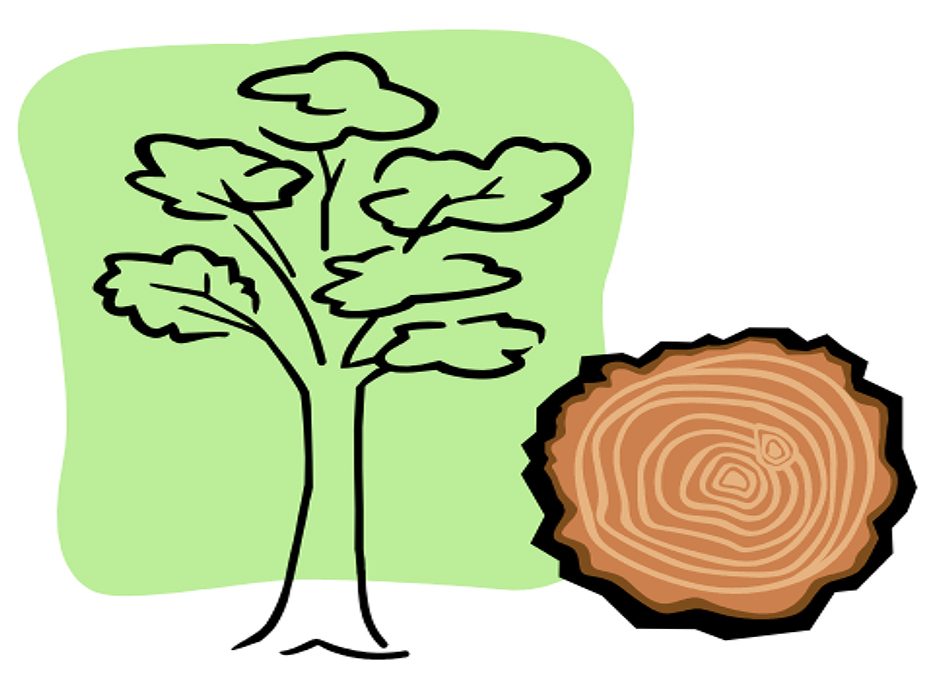
Wood is made up of parallel tube-like channels (cells).
These cells differ depending on the wood variety: hardwood or softwood.
Softwoods (northern or tropical woods) are rich in capillary fibers, which are dense, compact and rigid/hard, through which are located the vessels (“pores”) which cross transversely with the rays.
In softwoods, the structure, which is simpler, consists essentially of capillary fibers which are rigid/hard (supporting role) and at the same time constitute channels for the juices.
The growth of the trunks is carried out by adding peripheral layers on the outside of the tree. Therefore, the oldest wood (perfect/absolute wood or heartwood) is located in the center of the tree, while the youngest (sapwood) is located on the periphery.
Inside the material wood, air fills the cells and can represent from 2/3 to 4/5 of the volume. Depending on the degree of humidity (moisture content), we could observe deformations, which will be significant in the width direction and few in the length direction.
A wood is suitable for use when it presents the following moisture percentages:
For outdoor use: 12 to 18%
For indoor use: 6 to 12%.
Therefore, the variations in the dimensions of the wood oblige us to use products characterized by good adhesion to the substrate and good elasticity.
PROCESSED WOOD: 65%
Construction: Furniture
INDUSTRIAL WOOD: 25%
Grinded into very small pieces to make:
WOOD FOR HEATING: 5%
This proportion only represents what is marketable, without therefore including self-consumption.
WOOD RAW MATERIAL: 5%
Mainly for the chemical industry. Tannins, resins, oils (especially terpenes) and turpentine oil are produced.
2024 Ιnterkas All Rights Reserved | Terms & Conditions